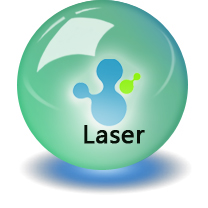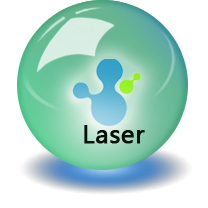热门下载
联系粤佳
广州市谱源气体有限公司


308nm准分子激光治疗白癜风的现状
2011-10-27 13:52:33
308nm准分子激光治疗白癜风的现状
郭静 项蕾红 郑志忠
【摘要】 白癜风的治疗仍是皮肤科医生面临的一大难题。光疗作为有效、安全的治疗手段,在白癜风治疗中的应用正在逐步推广。308nm准分子激光治疗白癜风快速有效、不良反应少。联合其它治疗方法可提高紫外线抵抗区的疗效。为此,综述308nm准分子激光治疗白癜风的新进展,以供临床参考。
【关键词】 白癜风;激光
Monochromatic Excimer Laser 308 nm in the Treatment of Vitiligo GUO Jing, XIANG Lei-hong, ZHENG Zhi-zhong. Department of Dermatology, Hua Shan Hospital , Fu Dan University, Shanghai 200040, China
【Abstract】 At present, vitiligo is still a refractory disease to physicians. Phototherapy is being gradually generalized for its efficacy and safety in the treatment of vitiligo. The strategies include phototheragy with psoralens plus ultraviolet A (PUVA) radiation and broadband or narrowband ultraviolet B radiation phototherapy. Recently, a new modality of monochromatic excimer laser(MEL) 308nm is successfully used in the treatment of vitiligo. It proves to be a time-saving and effective therapeutic option for the management of vitiligo. And more inspiritingly, MEL shows rather few adverse effscts. Also, the combination of MEL with other regimens can increase the therapeutic effects on lesions of ultraviolet-resistinh area. The progress in the treatment of vitiligo with MEL 308nm is reviewed here.
【Key words】 VItiligo; Lasers
白癜风是一种较常见的后天性色素脱失性疾病,特征为表皮、黏膜和其他组织内黑素细胞缺失,发病率为0.5%~2%,无明显种族、性别差异。其发病机制可能与遗传、神经内分泌、自身免疫等多种因素有关。
1 白癜风的传统光疗
白癜风的治疗方法很多,局部或系统糖皮质激素治疗可用于治疗白癜风,单纯光疗或合并局部糖皮质激素治疗目前应用亦较广泛[1]。光疗包括补骨脂素加长波紫外线(PUVA)疗法、宽谱或窄谱中波紫外线疗法(NBUVB),均可以获得白癜风局部皮损的色素恢复。Westerhof等[2]对PUVA和NBUVB治疗白癜风的疗效进行了对比,结果显示,NBUVB疗效优于PUVA,同时局部红斑、 角化过度的发生率较低。一次近期的关于白癜风的非手术疗法的分析显示[3],NBUVB的有效率为63%,高于宽波UVB(57%)或系统性PUVA(51%)。同长波紫外线相比,NBUVB具有光毒性小,色素恢复均匀,治疗时间短等特点,长期治疗皮肤癌的发病率比PUVA低,同时适用范围广,孕妇也可接受治疗[2]。然而,NBUVB治疗白癜风亦有其局限性,要达到满意的疗效往往也需要一年甚至更长的时间[1],需要的高能量又往往被其光毒性所限制。某些部位如皮肤皱褶处由于不能充分暴光,疗效亦受到影响。
2 308nm 准分子激光的物理特性
准分子激光(excimer laser),是脉冲气体激光,在电流通过时发光物质被激活,释放出某一特定波长的单色光。气体是由惰性气体和卤素混合而成,激活的惰性气体和卤素可形成卤化物,准分子激光是连续的脉冲气体激光,释放的光波长在紫外线范围内,脉冲宽度为10~30nm,频率为0~35Hz。目前用于皮肤科的为XeCl准分子激光。XeCl二聚体由惰性气体氙(最外层有8个电子)和卤素氯(最外层有7个电子)组成,该准分子仅在电源激发时以结合状态存在。目前临床常用的准分子激光脉冲为20~40豪微秒,每一脉冲能量可达3~3.5mJ/cm²,光斑直径数厘米。308nm准分子激光属于UVB紫外光,它与目前窄谱UVB相比能量高出10倍以上,且光纯度更高(波长位于308nm±1nm)。
3 308nm 准分子激光治疗白癜风的机制
308nm XeCl准分子激光首先用于治疗稳定期斑块型银屑病[4],最近成功地用于治疗白癜风。其波长与NBUVB相近,故可能具有相似的生物学和临床效应。由于白癜风的发生有自身免疫机制的参与[5],而NBUVB通过对细胞及体液免疫的抑制作用抑制了白癜风病变的进展。研究表明,UVB照射后,局部TGF-в1 水平升高,TGF-в1具有免疫调节作用,提示UVB诱导局部TGF-в1水平升高,从而抑制了局部免疫和炎症反应,促进局部色素恢复。NBUVB亦可能通过刺激毛囊外毛根鞘残余的黑素细胞来刺激色素产生[5-6]。Cui等[7]指出,在正常皮肤中,仅表皮中存在激活的黑素细胞,外毛根鞘的黑素细胞作为细胞储备处于非激活状态,白癜风发病过程中这些储备的黑素细胞未被累及。在光疗作用下,储备的黑素细胞有丝分裂、增殖并沿外毛根鞘表面迁移至临近的表皮,临床上表现为“色素岛”[8]。细胞因子或炎性介质如白介素(IL)-1、转化生长因子(TGF)-а和白三烯C4可能在这个过程中起重要作用[8-9]。准分子激光在白癜风治疗中的具体作用机制目前仍然不清楚,但由于光较纯净、是相干性的单频光源、且能量较NBUVB强,在临床应用上具有优势,可以选择性照射白癜风局部皮损,在较短的时间内获得较好的疗效。
4 308nm 准分子激光治疗白癜风
准分子激光治疗白癜风疗效好、起效快。Spencer等[10]报道了18例稳定期白癜风患者,大部分患者以前接受过其它方法无效。其中12例患者23处皮损在接受准分子激光照射至少6次后,57%皮损出现一定程度的色素恢复。另有报道[11],6例局限型白癜风患者接受了每周2次准分子激光照射共6个月。色素大约在治疗第8周时开始出现,6例患者中有4例出现色素恢复,其中3例色素恢复超过75%。Baltas等[12]报道了1例24岁的女性患者,给予准分子激光照射肘部皮损,每周3次,5周后改为每周2次,至6个月时色素完全恢复,在之后1年的随访中未出现治愈部位的色素脱失。
准分子激光治疗白癜风的疗效与患者病程、治疗次数和皮损部位有关。Esposito等[13]报道了24例白癜风患者,给予准分子激光每周2次照射白癜风局部皮损,共9个月并进行随访。初始剂量为患者最小红斑量[MED]的75%。发现接受治疗时病程越短,疗效越好;除此之外,疗效还和治疗次数呈正相关,Taneja等[14]观察了14例稳定期白癜风患者,发现准分子激光局部照射手足部位皮损,色素多从周边开始恢复,部分手背部位皮损,色素也可从残余色素的毛囊处首先出现;而腋下和面部皮损,色素以上述两种方式出现。伴白发皮损无色素恢复,提示黑素细胞在色素恢复过程中是必需的。研究提示,面部和腋下的疗效优于手足。在Choi等[15]的研究中,140处皮损按部位分为4组;面颈部、躯干部、四肢、肢端和关节部位。予准分子激光每周2次局部照射。其中肢端和关节部位疗效最差,其初始剂量3~5倍于面颈部,疗效仍不理想。另外,研究发现治疗的前20次疗效持续增加,在20~30次照射期间,显示出平台期。考虑到治疗的费用效益比,如20次准分子激光照射后皮损无进一步色素恢复,可考虑改用其它的治疗方法。308nm准分子激光波长与NBUVB в11nm)相近,但传统的UVB为多频、连续的非相干光,而准分子激光为单频的相干光,二者某些参数如,脉冲频率不同,在白癜风的治疗上准分子激光较NBUVB显示出更好的疗效[16]。在报道中,作者收集了8例白癜风患者,共有对称性色素脱失皮损23对,一侧予308nmXeCl准分子激光每周2次照射,另一侧则予NBUVB局部照射。结果显示,准分子激光局部照射治疗白癜风疗效优于NBUVB,且起效快,有助于提高患者依从性;某些以前传统光疗包括NBUVB治疗无效的患者,给予准分子激光照射后可出现部分色素恢复[16]。
308nm 准分子激光联合药物治疗可提高其疗效[17]。作者将研究人群分为2组,A组共23出皮损接受局部准分子激光照射联合0.1%他克莫司软膏治疗白癜风,在UV敏感区(面、颈、躯干)和UV抵抗区(骨突处、肢端)均可获得较满意疗效,优于单独准分子激光照射,后者仅在UV敏感区疗效佳。
准分子激光亦可用于治疗继发性于CO?激光磨削术后的白斑。在Friedman等[18]的报道中,2例继发性白斑患者分别接受了8次和10次准分子激光局部照射。平均累计剂量为1.75mJ/cm²。疗程结束后,2例患者分别达到75%和50%~75%色素恢复,无明显不良反应发生。提示准分子激光可以较低的累计剂量快速有效的促进继发性白斑患者局部皮损的色素恢复。
准分子激光治疗白癜风不良反应少。在相关报道中,其主要不良反应为照射局部的红斑、瘙痒、烧灼感[10,11]患者大多可以耐受。由于其光点较小,仅为2cm ×2cm 上下,与其他光疗相比,极少出现皮损周围色素沉着不良反应[12],在美容学上更易为患者所接受。
5 结语
准分子激光相对UVB而言有一定的优势[19]。由于操作灵活,它可以用于治疗局灶性病变,尤其在皮肤皱褶处等部位具有优势。由于很少影响病变周围正常皮肤,使大剂量应用成为可能,从而进一步提高疗效,减少了皮肤癌变发生的可能性;同时可以缩短治疗时间,降低紫外线总暴露量。单一波长靶光疗将成为白癜风治疗的一种有效快速的新方法,联合其它治疗方法更可进一步提高疗效。308nm准分子激光靶光疗的局限性在于所用光点大小仅为2cm ×2cm ,对大面积皮损的治疗带来了不便。
参考文献
1 Njoo MD,Westerhof W, Bos JD, et al. The development of guidelines for the treatment of vitiligo. Meta-analysis of the literature. Arch Dermatol, 1999, 135:1514-1521.
2 Westerhof W, Nieuweboer-Krobotova L. Treatment of vitiligo with UV-B radiation vs topical psoralen plus UV-A. Arch Dermatol, 1997,133: 1525-1528.
3 Njoo MD, Spuls PI, Bos JD, et al. Nonsurgical repigmentation therapies in vitiligo, Meta-analysis of the literature. Arch Dermatol, 1998, 134: 1532-1540.
4 Asawanonda P, Anderson RR, Chang Y, et al. 308 nm excimer laser for the treatment of psoriasis: a dose-response study. Arch Dermatol. 2000, 136: 619-624.
5 Fitzpatrick TB. Mechanisms of phototherapy of vitiligo. Arch Dermatol, 1997, 133: 1591-1592.
6 Tobin DJ, Swanson NN, Pittelkow MR, et al. Melanocytes are not absent in lesional skin of long duration vitiligo. J Pathol, 2000, 191: 407-416.
7 Cui J, Shen LY, Wang GC. Role of hair follicles in the repigmentation of vitiligo. J Invest Dermatol, 1991, 97: 410-416.
8 Morelli JG, Kincannon J, Yohn JJ, et al. Leukotriene C4 and TGF-alpha are stimulators of human melanocyte migration in vitro. J Invest Dermatol, 1992, 98: 290-295.
9 Kondo S, Sauder DN. Keratinocyte-derived cytokines and UVB-in-duced immunosuppression J Dermatol, 1995, 22: 888-893.
10 Spencer JM, Nossa R, Ajmeri J, Treatment of vitiligo with the 308-nm excimer laser: a pilot study. J Am Acad Dermatol, 2002, 46: 727-731.
11 Baltas E, Csoma Z, Ignacz F, et al. Treatment of vitiligo with the 308-nm xenon chloride excimer laser. Arch Dermatol, 2002, 138: 1619-1620.
12 Baltas E, Nagy P, Bonis B, et al. Repigmentation of localized vitiligo with xenon chloride laser. Br J Dermatol, 2001, 144: 1266-1267.
13 Esposito M, Soda R, Costanzo A, et al. Treatment of vitiligo with the 308 nm excimer laser. Clin Exp Dermatol, 2004, 29: 133-137.
14 Taneja A, Trehan M, Taylor CR. 308-nm excimer laser for the treatmet of localized vitiligo. Int J Dermatol, 2004, 29: 133-137.
15 Choi KH, Park JH, Ro YS. Treatment of Vitiligo with 308-nm xenon-chloride excimer laser: therapeutic efficacy of different initial doses according to treatment areas. J Dermatol, 2004, 31: 284-292.
16 Hong SB, Park HH, Lee MH. Short-term effects of 308-nm xenon-chloride excimer laser and narrow-band ultraviolet B in the treatment of vitiligo :a comparative study. J Korean Med Sci, 2005, 20: 273-278.
17 Passeron T, Ostovari N, Zakaria W, et al. Topical tacrolimus and the 308-nm excimer laser: a synergistic combination for the treat-ment of vitiligo. Arch Dermatol, 2004, 140: 1065-1069.
18 Friedman PM, Geronetuus RG. Use of the 308-nm excimer laser for postresurfacing leukoderma. Arch Dermatol, 2001, 137: 824.
19 杨慧兰,刘仲荣,李雪梅,等。308nm准分子激光治疗白癜风临床研究。中华皮肤科杂志,2006,39: 35-37.






